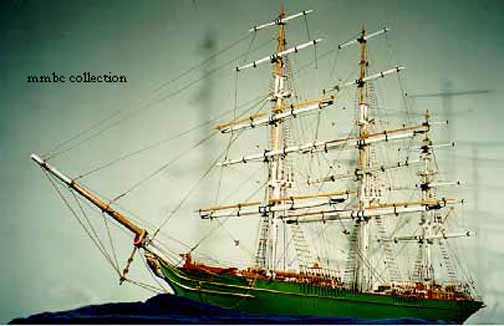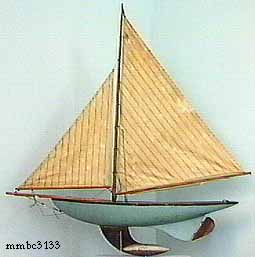
'THERMOPYLAE'

Designed by the Americans, clipper ships came into widespread use by the English for their Far East trade in the mid 1800's. These were vessels of delicate lines and massive sail area. Their hulls were sheathed with copper to provide less friction with th e sea.The 991 ton Thermopylae was designed by Walter Hood and build in Aberdeen in 1868 and was claimed to be the faster sailing clipper in the world. She was the great rival of the clipper 'Cutty Sark'. She spent her twilight years in Victoria B.C. running lumber to the orient. This particular model was donated to the museum in 1996 by Emery Lalonde.
mmbc collection

Evolved at the turn of the 18th century, the sloop was designed at the same time as the 'cutter' which it closely resembled in design and function. The sloop is a fore-and-aft rigged ship that carried a single mast. As with the 'cutter', this ship was use d as an auxiliary ship to a larger vessel. It was popular with both smugglers and revenue forces alike. It remains popular with yachtsmen of today.mmbc 3133

Square sails eventually gave way to fore-and-aft rig. Economy of manpower and better sailing properties brought this rig to the fore. The sealing fleets of Victoria and the Grand Banks fishermen were fine examples of the schooner rig. The Bluenose, built in Lunenburg Nova Scotia, is an example of the schooner. It was the fastest ship of its time.mmbc collection

![[English]](../simages/english.gif)
|

![[French]](../simages/french.gif)
|

![[Credits]](../simages/credit.gif)
|

![[Feedback]](../simages/feedback.gif)
|